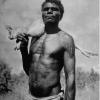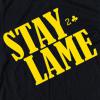BoF: Demna Gvasalia Reveals Vetements' Plan to Disrupt the Fashion System
-
hello 2025!
supertalk is free to browse as a guest. You need to be a member to participate in discussions or buy and sell on the classifieds.
Classifieds listings are now free for members.
supertalk is now upgraded to //// supertalk 8 ////
______________________________________
Current new membership is $US 12 ONE TIME FEE. NO RENEWAL FEE.
______________________________________
You can also become a premium superseller or supermember. Businesses who want to promote their brand and products need to become a supersponsor. superfuture® is privately owned and has been online continuously for 26 years. supertalk has been online for 21 years and is a digital cockroach that will survive all current and future apocalypses.
-
Similar Content
-
- 0 replies
- 1646 views
-
- 0 comments
- 8985 views
-
- 1 reply
- 3960 views
-
- 1 comment
- 14240 views
-
- 2 comments
- 11639 views
-
-
Top 10 Active Viewed Topics
-
- 24436 replies
- 6971932 views
-
- 26785 replies
- 6484226 views
-
- 24770 replies
- 4812673 views
-
- 23132 replies
- 3929794 views
-
- 14078 replies
- 3768640 views
-
- 10651 replies
- 3318764 views
-
- 21295 replies
- 3155937 views
-
- 13320 replies
- 2984072 views
-
- 11654 replies
- 2744840 views
-
- 8534 replies
- 2661846 views
-













Recommended Posts
Join the conversation
You can post now and register later. If you have an account, sign in now to post with your account.